12 Australian Defence Force veterans share their stories of service ahead of Anzac
No matter how many years were serviced or how many medals are worn, our veterans still signed on the dotted line and committed to protecting us. These are the stories of twelve Toowoomba veterans as we pay our respects this Anzac Day.
Toowoomba
Don't miss out on the headlines from Toowoomba. Followed categories will be added to My News.
This Anzac Day, the Chronicle has spoken with veterans of all ages from across the district to share the importance of paying our respect and remembering the service and sacrifice of our military personnel.
These are their stories. Lest we forget.
Daisy McPaul
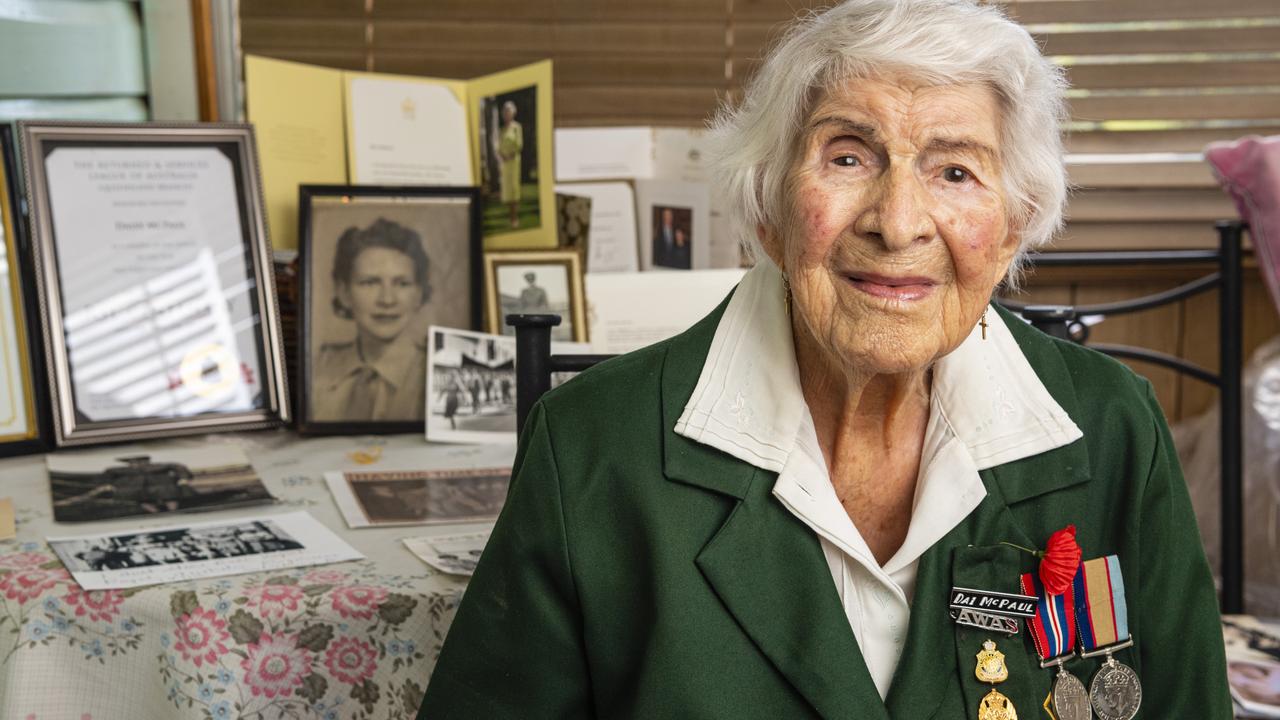
When World War II was declared and Australia joined the fight, Daisy McPaul was working in Western Queensland and was asked to support the nation.
With thousands of men now fighting across the seas, Mrs McPaul, who recently celebrated her 100th birthday, was sent a letter outlining she had to either enlist or work in a factory.
“I went into the first door and it was the Army,” she said.
Mrs McPaul was given the rank of Sapper, and performed clerical work.
“Everyone wanted to be a driver because of Princess Elizabeth,” she said.
“There were so many drivers, but when it came to me, I had to do an aptitude test, and I got 100 per cent on that – so they took me in as clerical.”
During her time in the war, Mrs McPaul was a switch operator and assisted the forces with courts and finalising documents, including alerting families of the passing of their loved ones overseas.
Mrs McPaul was in Brisbane when the war ended, and lives in Toowoomba, where she has had five children, three grandchildren and four great grandchildren.
Claude Johnstone
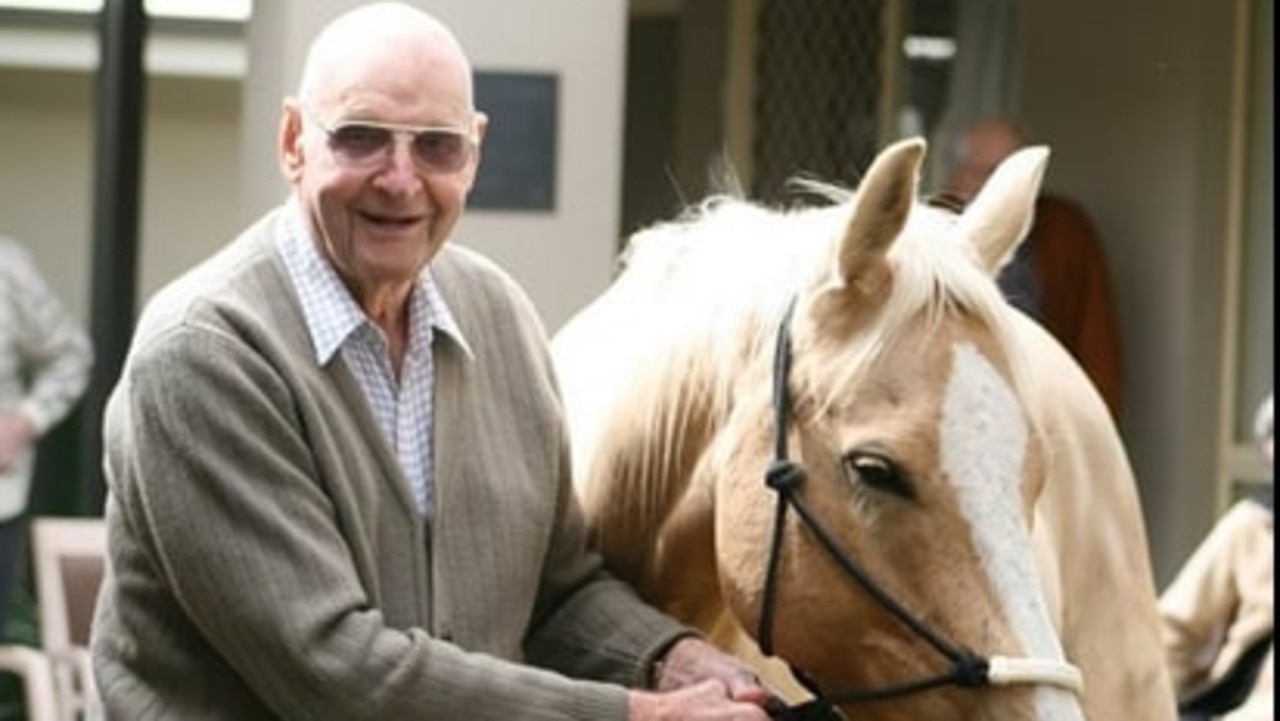
Born and raised in the Inglewood area, Claude Johnstone recently celebrated his 100th birthday and reminisced on his service in the Australian Army.
The outbreak of World War II saw Mr Johnstone, 18, enlist into the Army in 1939, where he served in the Australian Light Horse Brigade, and later New Guinea, as a motor mechanic.
“According to my discharge, I had 364 days in New Guinea,” he said.
Once the war ended, Mr Johnstone returned to the Inglewood area where he married the love of his life Thelma Schmidt, and later had three children, seven grandchildren and 17 great grandchildren.
Jason Hurst
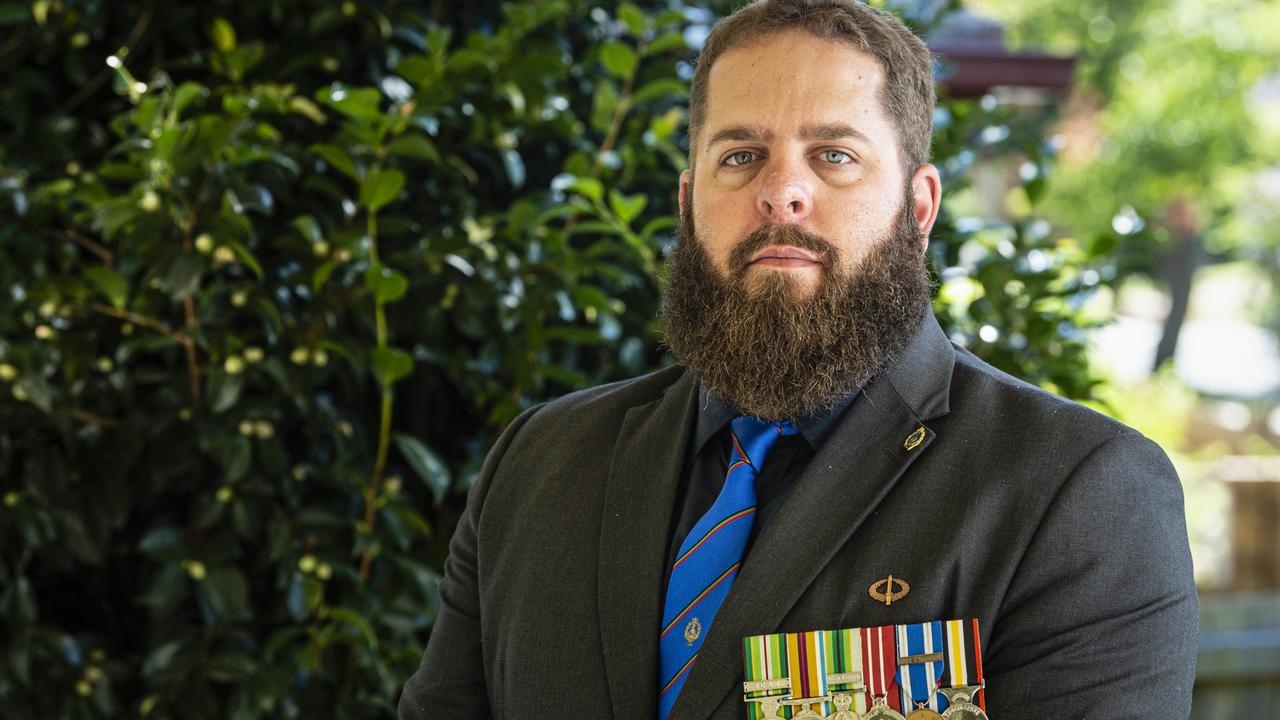
Toowoomba veteran Jason Hurst was just 17 when he signed on the dotted line and dedicated his life to protecting his country.
During his eight-year service in the Australian Army, Mr Hurst, 33, has been deployed on peace keeping duties, to Middle Eastern war zones, and served on home soil.
“I have always had an interest in joining the army since I was a kid,” he said.
“I followed my dreams, and that’s exactly what I did.”
Within four months of being in the 1 RAR (1st Battalion, Royal Australian Regiment) based in Townsville, Mr Hurst was deployed to East Timor.
In the years to follow, he would also be deployed to Afghanistan, Germany, Malaysia and Hawaii on training exercises.
Although he had different purposes in each location, Mr Hurst said there is no difference where or how you serve your country.
“We have guys that went to Somalia and they were completely forgotten about because apparently that didn’t count,” he said.
“Yes, there’s more of a risk to your life in Afghanistan, Iraq … somewhere where there is a direct enemy threat.
“But that being said, I know guys that were climbing down wells in the first few months of when East Timor kicked off that were pulling out bodies. I guarantee they have seen more dead bodies than I did.
“There is a slight difference (in jobs), but there is no difference for the greater good.”
Mr Hurst was medically discharged from the Australian Defence Force in February 2014, and has since returned to the region with his wife and three children.
Liz Fitzgibbon
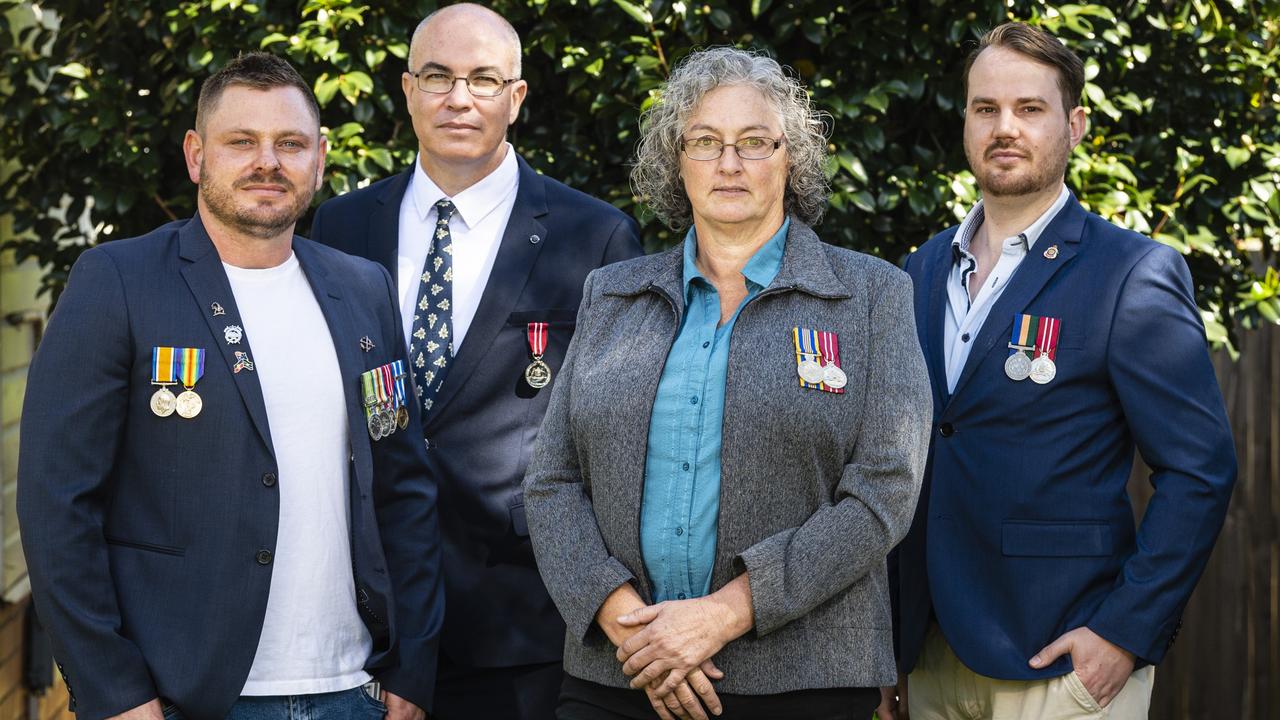
Considered the “rarest of the rare”, Liz Fitzgibbon was a female army apprentice, one of only 117 women over a 40-odd year scheme, who spent the majority of her 17-year service based in Oakey.
In 1985, Mrs Fitzgibbon enlisted into the Australian Army as part of the Army Apprentice Scheme at 17 years of age as an electronics technician.
Through her time, she would transition into a storeman, and after an aircraft course in ‘95, would become an aircraft technician working on the Black Hawks.
“There happened to be an ad in the paper, and I thought ‘Yay, a job for nine years.’,” she said.
“I just fell in love with it.”
After 17 years, Mrs Fitzgibbon was medically discharged from the service, a decision she wasn’t fond of, but simply agreed “that’s life”.
“When I discharged, it took me a lot of years to come to terms with the fact that I hadn’t been anywhere or done anything, but that didn’t make me any less important than anyone else,” she said.
Ben Quirke
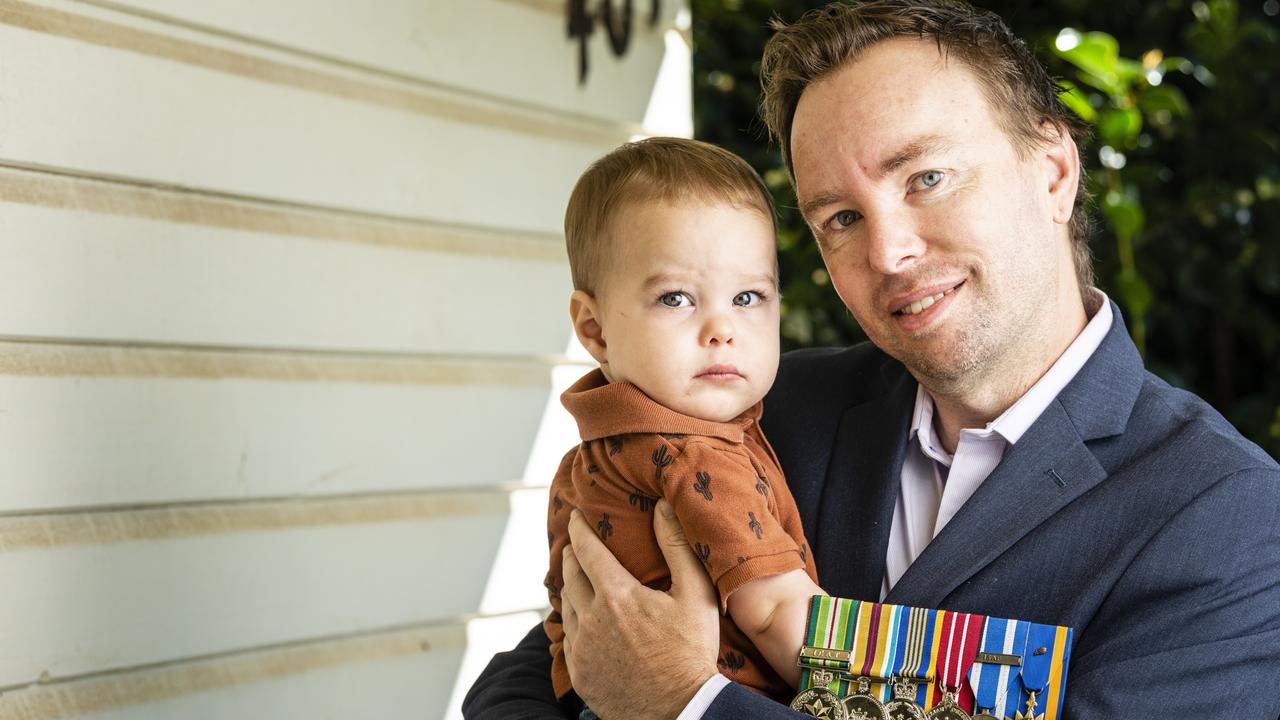
Australian Air Force veteran Ben Quirke always had a passion for aviation, and at 19, he signed on the dotted line and enlisted in the Defence Force.
“I had always wanted to fly,” he said.
“I joined as an avionics technician, and in about 2007/2008, I transitioned over to become a pilot.”
Mr Quirke worked on a number of aircrafts across the world, including the F-18 Hornets, the King Air in Townsville, the C-17 in Afghanistan and Iraq, flew surveillance aircraft in the Middle East and assisted in strategic airlift and humanitarian disaster relief.
After 21 years of service, Mr Quirke was medically discharged from the Australian Air Force last November.
“I wasn’t ready to leave, I didn’t want to leave, but I had no choice,” he said.
“It’s been difficult. There’s a big adjustment.
“But there’s a sense of pride in giving back, and I got a lot of opportunities that lots of people would never get.”
Stephen Osborne
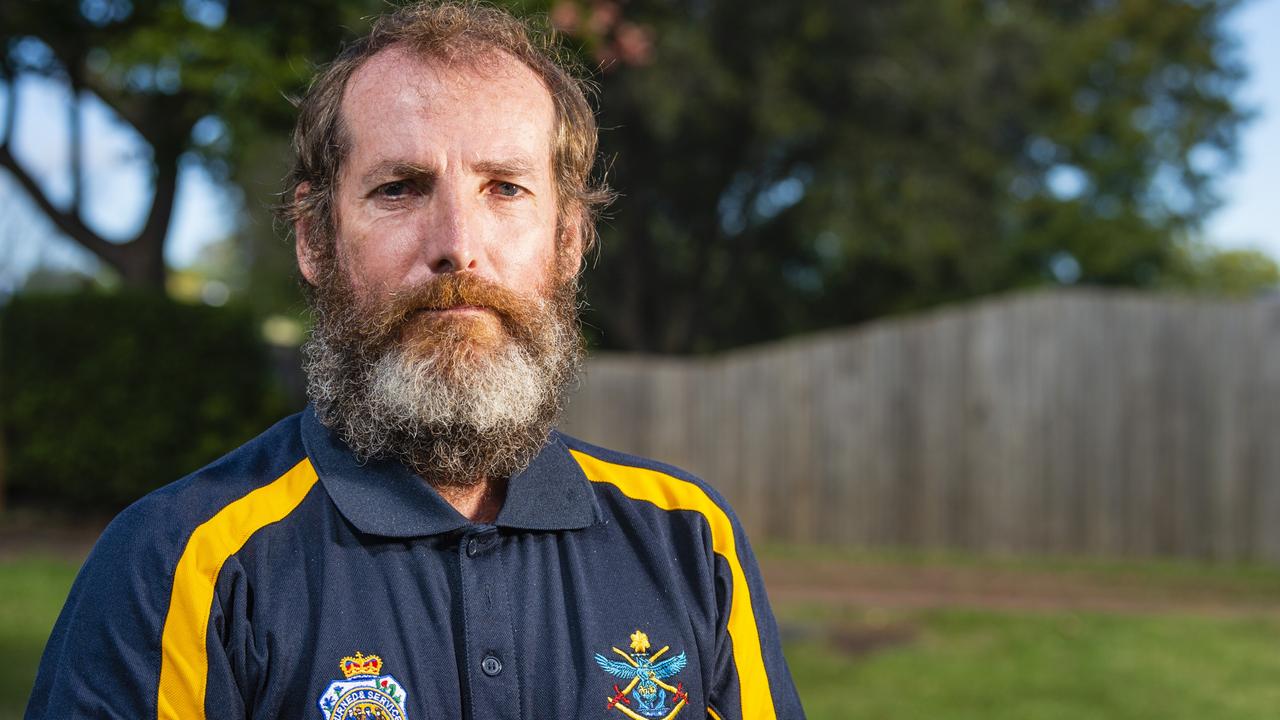
Since he was six years old and began to learn about the Anzac tradition and spirit, Stephen Osborne knew he wanted to be a soldier.
However, it was only once meeting an Anzac veteran while waiting for a Brisbane service, that he knew he wanted to join the Calvary.
In 1985, after serving in the Army reserve as a teenager, Mr Osborne enlisted in the Australian Army, where he served in the 2nd Calvary Regiment as an armoured fighting vehicle driver, gunner and eventually crew commander.
With the intake of RAAF helicopters, Mr Osborne transferred to Black Hawk air crewman.
In 1999 after a traumatic head injury, Mr Osborne was medically discharged from the Army, and completed the military rehab program in 2001.
“Leaving the Army was fairly traumatic for me,” he said.
“I had sustained a traumatic head injury, I was struggling a lot and dealing with an invisible injury was quite difficult.”
Mr Osborne, with the assistance of his wife who is also his carer, was selected to compete in the 2018 Invictus Games as part of Team Australia.
“Being around the atmosphere and camaraderie again brought me back to my old reality,” he said.
“Prince Harry said ‘Take the healing power of sport back to your local veteran community.’ and so we set up the Veteran Adaptive Sport Toowoomba and now facilitate adaptive sport for our veteran community.”
Sheldon Rogers
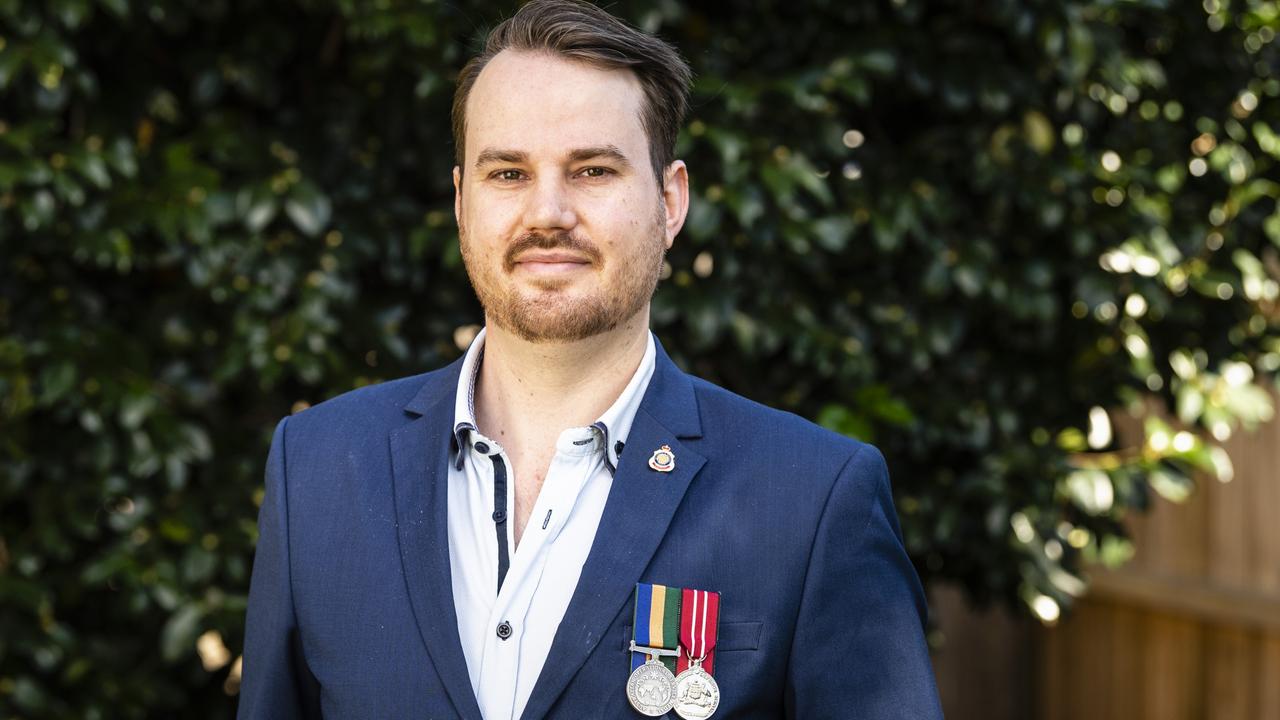
Following in the footsteps of his family before him, Sheldon Rogers enlisted in the Australian Navy in 2012 at the age of 18.
“To serve was something I always had in mind,” he said.
“When I joined, I felt like I was finally getting the chance to do my part.”
Mr Rogers served as a Maritime Warfare Officer on ships along Australia and overseas, particularly on HMAS Ballarat, patrol boats and hydrographic survey ships.
While Mr Rogers grew up in Tasmania, he lived across Australia and eventually relocated to Toowoomba in 2019 after being discharged in 2018.
“The defence is such a broad experience,” he said.
“You could join up on the same day as someone else doing the same job, but you could be put on totally different ships and doing totally different experiences.
“At the end of the day, you decided to sign on the dotted line, you decided to put on a pair of boots and you decided to go and do the job.
“As to where that takes you, that's almost always out of your hands, but its focusing on your service and the sacrifice of that service.”
Joshua Hawkins
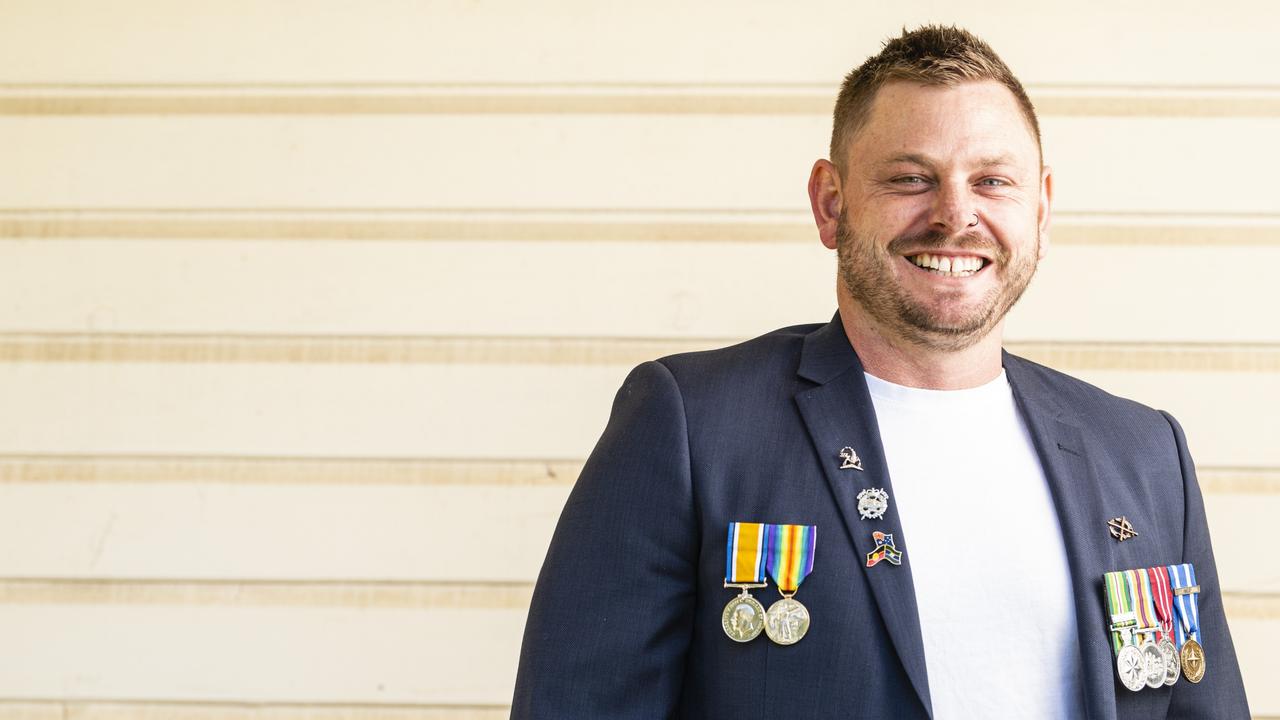
After witnessing his brother enlist in the Defence Force, Joshua Hawkins took the step to sign on the dotted line and become a light armoured crewman with the Australian Army in 2010.
“It was always something that was on my possible to do list as a young fella," he said.
“It ticked all the boxes on my list as well as getting to work on engines.”
“My great grandfather Reginald Francis Hawkins was a massive influence on my choice to join as well though.
“He was a WWI Indigenous soldier who became a prisoner of war, but was eventually repatriated to England and later to Australia.”
In December 2010, Mr Hawkins was posted to B Squadron 3/4 Cavalry Regiment in Townsville, where shortly afterwards he would be deployed to Afghanistan.
The desire for marriage and a family resulted in Mr Hawkins stepping away from the Defence lifestyle after four years.
“The hard bit was when you come back and you go out to do your exercise, it doesn't feel real anymore because you know that no one is going to shoot you,” he said.
“When you’re in active service, there’s always a high risk of that or being blown up.
“You come back and it doesn't seem real.”
Allan Traise
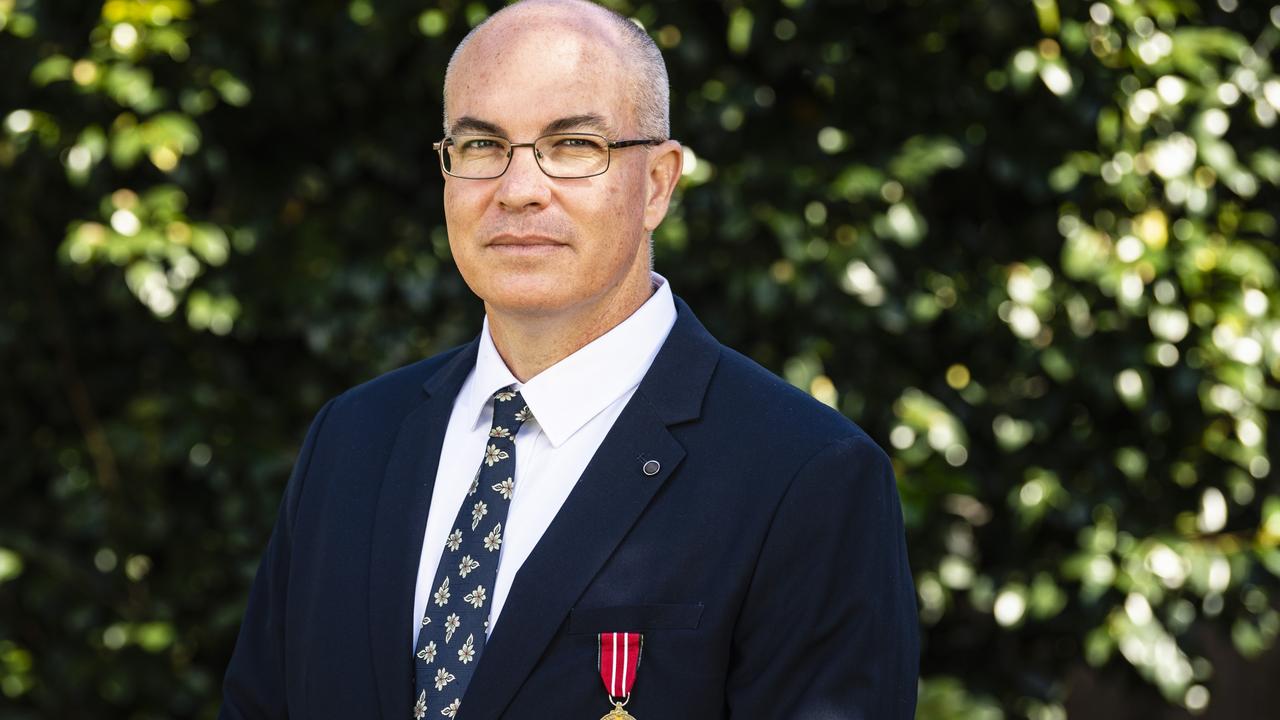
Already serving in the Australian Army Reserves, Allan Traise enlisted in the Australian Army in 1995, where he spent a majority of his service as a police dog handler.
“I had a long family history of family serving in the army from World War I to present, and I wanted to serve and get out of my comfort zone,” he said.
“It wasn’t necessarily about going on an adventure, but about doing something interesting, fun, and a way to challenge myself.
“At the time, I was working two part time jobs and studying a double degree in Brisbane. I couldn’t afford to do everything and be everywhere or pay my bills, so I joined the army with the idea I would do it as a career, or do it long enough that I could go back to my tertiary education.”
In 1999, Mr Traise was medically discharged from the Australia Army with an injured back, which he said resulted in a massive adjustment to his life.
“I ended up doing the at-home dad thing with my boys, and because I had never not worked, it took a while for me to adjust to that change,” he said.
“It ended up being a real blessing to see my boys grow up, but at the time, I felt like I should be out there as the provider, and I had to adjust to my new reality.”
Mr Traise said it was difficult to switch off his defence training when it came to everyday tasks of driving a car or taking a bushwalk.
“You have been trained a certain way, but there is no real training on how to switch that off when you leave the Army,” he said.
Ian Haycock
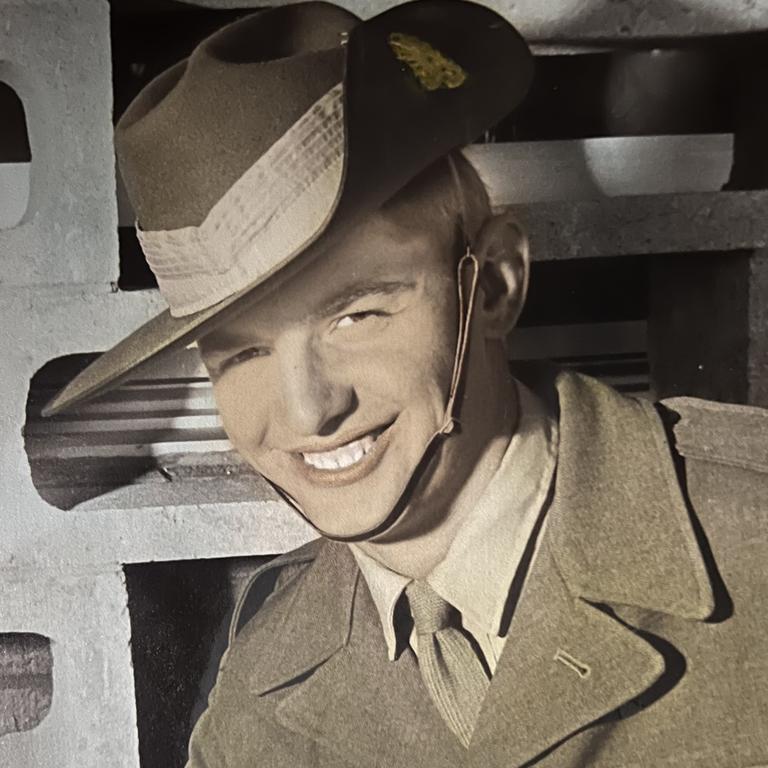
Enlisting initially on a three-year period, Ian Haycock signed on the dotted line in 1967, after a devastating drought made things difficult on the land.
During his 26.5 years of service in the Australian Army, Mr Haycock served in the Royal Australian Signals Corps units across Australia, the 28 ANZUK Brigade and Signal Squadron from 1971 to ‘73, and the 104 Signal Squadron in South Vietnam from March 1970 to March 1971.
“The posting to Singapore was a very rewarding experience, as there were Navy, Army and Air force from four different nations, Australia, New Zealand, United Kingdom and Singapore,” Mr Haycock said.
I would say that a memorable posting was the two-year stint at 1 Recruit Training Battalion (1RTB) in Wagga Wagga training.
“Young men straight from the street was a hard task some days … 16 to 18 hours per day. To see them transform from a lifestyle that they were accustomed, to the military way of life was extremely rewarding both for the new members of the Army and the staff.”
Mr Haycock left the Army in ‘93 and said it was important for younger generations to understand Australia’s military history.
“It’s important for younger generations to instil pride in themselves and understand that those that lost there lives for the love of Australia and our way of life is due to their spirit and love for there country,” he said.
“The question of who should be commemorated is simple: a veteran is a veteran. Some gave all. All gave some.
“The home fires had to be kept burning not all could be on the front line.”
Shannon Parison
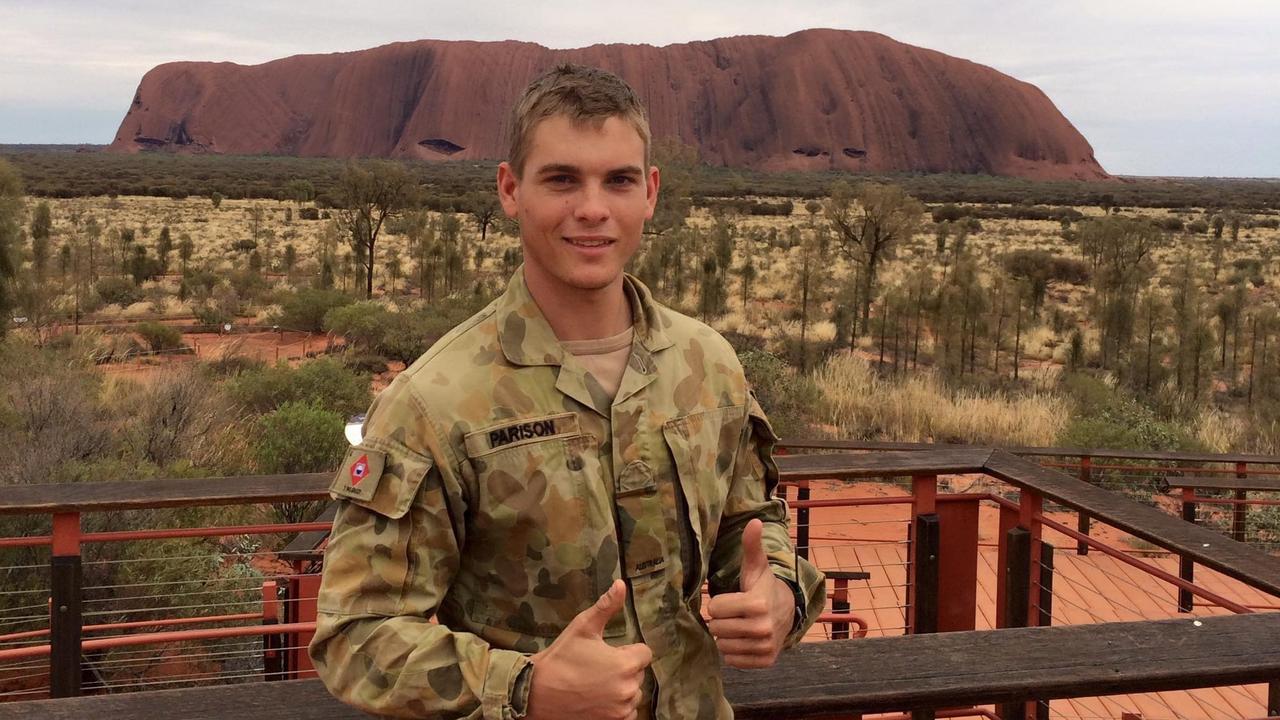
As a child, Shannon Parison knew he wanted to follow in his “old man’s” footsteps and become a SGT in the Australian Army.
After losing interest in school, he knew he had met the requirements to sign up, and at 17, he remembers passing through the gates of 1RTB – Kapooka.
Based in the 7th Signals Regiment at Cabarlah, Mr Parison’s role was as an Electronic Warfare Operator, with the job to operate state-of-the-art technology and communications equipment to intercept and disrupt enemy transmissions.
Mr Parison served more than 6 years in the Australian Army, during which time he said one of the key memorable moments were the lifelong friendships he formed.
“At no point in time, should our forefathers be forgotten ‘Lest we forget’,” he said.
“Without their bravery and heroic acts, Australia wouldn’t be what it is today. If we don’t remember who and what our ANZACs did, then we’d lose who we are, as a nation and what we stand for.
“ANZAC DAY is a time for those who have served whether past, current, or future, and is an opportunity to get together and remember not only our ANZACs but the sacrifices that were made.”
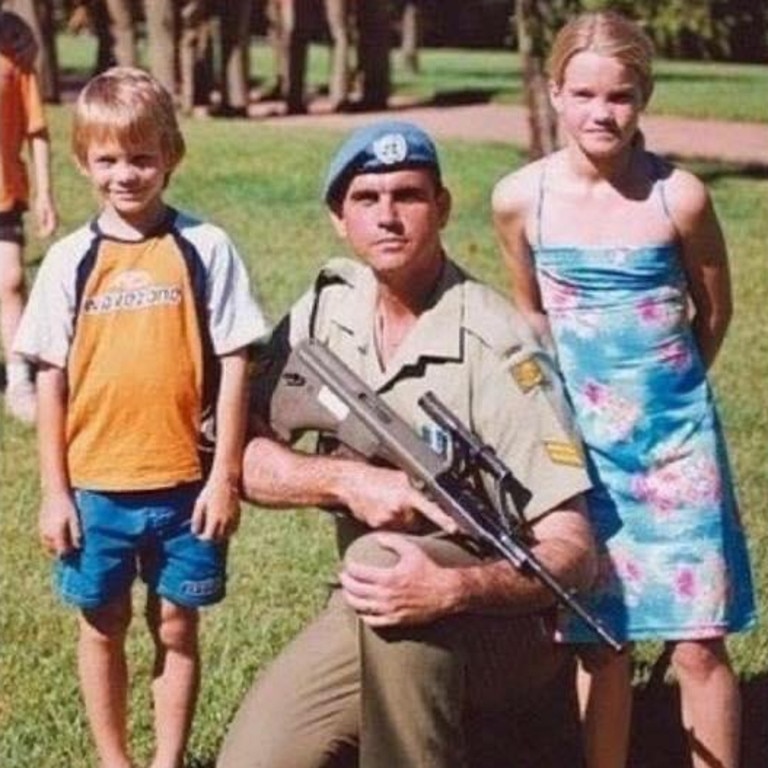
Austin Nichols
In 1994, Austin Nichols committed to serving the nation in the Australian Army.
With a first hand account of world wide conflict through family members, Mr Nichols felt there was a normal profession for him to follow in the footsteps of his grandfather, father and brothers to join the defence force.
During his 12 years of service, Mr Nichols would see the world change.
Originally an Air Dispatcher, a parachuting accident led to a transfer to Avionics Tech, where he would work on Black Hawk Helicopters in Townsville and Oakey.
Mr Nichols served in Peacekeeping duties during a deployment to East Timor and supported defence elements in the Solomon Islands.
“People join for a multitude of reasons. A sense of duty, obligation, for an employment opportunity etc. and during their time “in”, most will develop a sense of pride for the arm of the Defence Force they served with and have the ANZAC ethos of “never giving up” “against enormous odds” “Mateship” installed within one way or another,” he said.
“While not all will serve in an active war zone and I hope no one ever has to again.”








